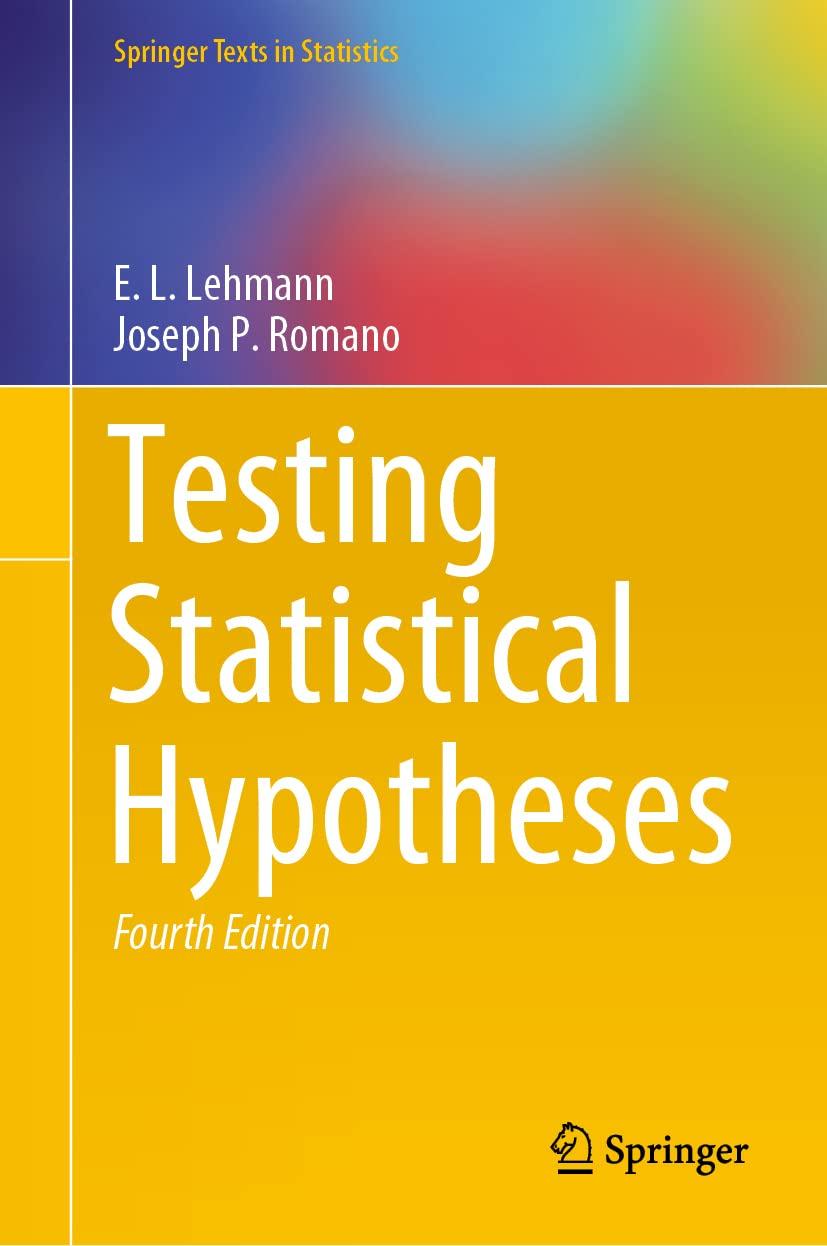Measurability of tests of Theorem 4.4.1. The function 3 defined by (4.16) and (4.17) is jointly measurable
Question:
Measurability of tests of Theorem 4.4.1. The function φ3 defined by
(4.16) and (4.17) is jointly measurable in u and t.
[With C1 = v and C2 = w, the determining equations for v, w, γ1, γ2 are Ft(v−) + [1 − Ft(w)] + γ1[Ft(v) − Ft(v−)] (4.26)
+γ2[Ft(w) − Ft(w−)] = α
and Gt(v−) + [1 − Gt(w)] + γ1[Gt(v) − Gt(v−)] (4.27)
+γ2[Gt(w) − Gt(w−)] = α, where Ft(u) =
u
−∞
Ct(θ1)eθ1 y dvt(y), Gt(u) =
u
−∞
Ct(θ2)eθ2 y dvt(y), (4.28)
denote the conditional cumulative distribution function of U given t when θ = θ1 and θ = θ2, respectively.
(1) For each 0 ≤ y ≤ α let v(y, t) = F−1 t (y) and w(y, t) = F−1 t (1 − α + y), where the inverse function is defined as in the proof of Theorem 4.4.1. Define γ1(y, t) and
γ2(y, t) so that for v = v(y, t) and w = w(y, t), Ft(v−) + γ1[Ft(v) − Ft(v−)] = y, 1 − Ft(w) + γ2[Ft(w) − Ft(w−)] = α − y
(2) Let H(y, t) denote the left-hand side of (4.27), with v = v(y, t), etc. Then H(0, t) > α and H(α, t) < α. This follows by Theorem 3.4.1 from the fact that v(0, t) = −∞ and w(α, t) = ∞ (which shows the conditional tests corresponding to y = 0 and y = α to be one-sided), and that the left-hand side of (4.27) for any y is the power of this conditional test.
(3) For fixed t, the functions H1(y, t) = Gt(v−) + γ1[Gt(v) − Gt(v−)]
and H2(y, t) = 1 − Gt(w) + γ2[Gt(w) − Gt(w−)]
are continuous functions of y. This is a consequence of the fact, which follows from (4.28), that a.e. PT the discontinuities and flat stretches of Ft and Gt coincide.
(4) The function H(y, t) is jointly measurable in y and t. This follows from the continuity of H by an argument similar to the proof of measurability of Ft(u) in the text. Define y(t) = inf{y : H(y, t) < α}, and let v(t) = v[y(t), t], etc. Then (4.26) and (4.27) are satisfied for all t. The measurability of v(t), w(t), γ1(t), and γ2(t) defined in this manner will follow from measurability in t of y(t) and F−1 t [y(t)]. This is a consequence of the relations, which hold for all real
c, {t : y(t) < c} = r (c) ≤ 0}.]
Step by Step Answer:

Testing Statistical Hypotheses Volume I
ISBN: 9783030705770
4th Edition
Authors: E.L. Lehmann, Joseph P. Romano






